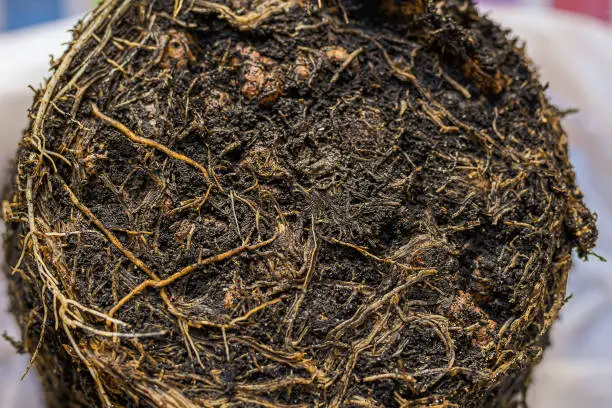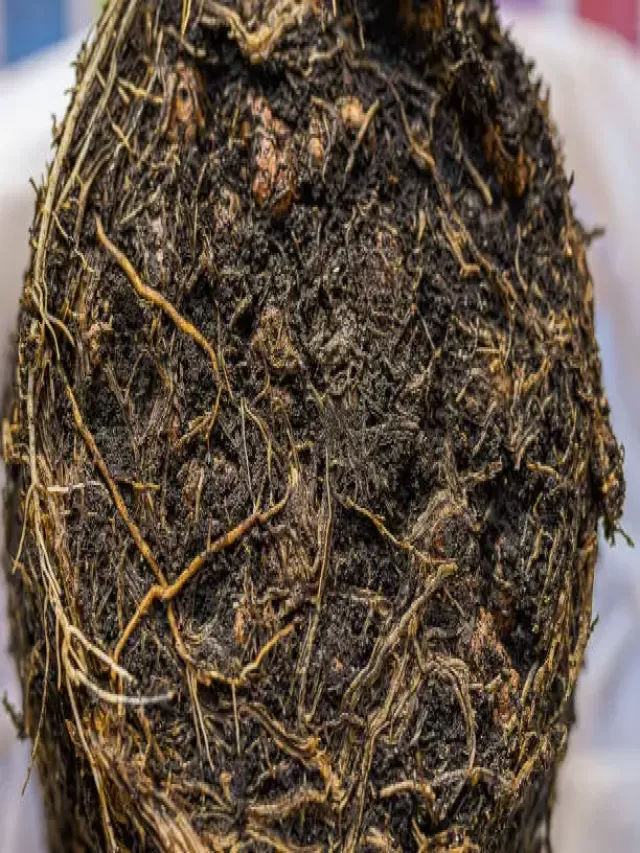Russian sage, also known as Salvia yangii, is a versatile sub-shrub that thrives as a perennial. Its tolerance to dry conditions makes it an excellent choice for xeriscaping. Beyond its ability to endure drought, this plant offers a long blooming period, making it a valuable addition to any flower bed.
The delicate, bluish-lavender flowers of Russian sage bloom throughout the summer and fall, creating a captivating display. However, it’s not just the blossoms that make this plant remarkable. Its stems and foliage make a strong statement, often overshadowing the floral spectacle as the main attraction.
Preventing Root Rot in Salvia yangii
If you notice root rot on your Russian sage, it’s crucial to address it promptly, as it can be fatal if left untreated. To save your plant, follow our expert guide. Look out for soft and blackened roots, which are signs of this damaging condition. Proper care and treatment are essential to restore your plant’s health.
Combatting Gray Mold Spots in Russian Sage
Gray mold spots, a common fungal infection, pose a threat to Russian sage and can spread rapidly. Ignoring these symptoms may result in the demise of your plant. It’s imperative to take action against this fungus to protect your beloved Russian sage.
Identifying and Treating Leaf Spots in Russian Sage
Leaf spots are among the most frustrating diseases that can affect your Russian sage. If you notice sudden color changes, wilting, or drooping of leaves, it’s essential to identify and address the issue promptly. Our comprehensive guide will equip you with the knowledge to spot these symptoms and save your plants.
Solving the Mystery of Yellowing Leaves
Yellowing leaves are a common problem in gardening, and Russian sage is not exempt. There are two main reasons behind this phenomenon: overwatering and nutrient deficiency. By understanding the causes and symptoms of each, you can address the issue effectively.
Magnesium shortage manifests as yellow patches between leaf veins on older leaves, while iron deficiency shows as yellowing between leaf veins on young leaves. Meanwhile, sulfur deficiency causes the newest leaves to turn completely yellow, and potassium deficiency results in bright yellow leaf edges. Lastly, nitrogen deficiency causes a general yellowing, starting with older inner leaves and spreading outward.
Sunburn in Russian Sage: How to Protect Your Plant
Determining whether your Russian sage is sunburned is relatively simple. If your plant changes color, turning yellow or white, it may be suffering from sunburn. However, it’s essential to note that leaves can also change color due to overwatering or insufficient light.
To confirm sunburn, examine the bottom of yellow leaves for a shaded area near the base. If this part remains greener, it indicates sunburn rather than another issue.
Addressing Brown Leaves in Russian Sage
Browning leaves are often a sign of sunburn caused by excessive exposure to direct sunlight. While your plant is unlikely to perish from sunburn, its growth may be negatively affected. Taking measures to protect your Russian sage from prolonged exposure to direct sunlight is essential.
Optimal Sunlight Conditions for Salvia yangii
If your Salvia yangii exhibits the symptoms mentioned above, it’s crucial to avoid leaving it in direct sunlight. This precautionary measure will prevent further damage and help restore your Russian sage to its former glory.
Understanding Drooping or Wilting Leaves in Salvia yangii
Drooping or wilting leaves are typically a sign of dehydration in plants. Large Russian sage plants are particularly vulnerable, as they require more water than smaller plants. To ensure your Salvia yangii remains healthy, it’s essential to provide adequate hydration.
To gauge your Salvia yangii’s water needs, simply check the weight of its pot. If it feels light, it indicates that the soil and roots are dry and require watering.
Essential Care Tips for Salvia yangii
Watering: Striking the Right Balance
Proper watering is vital for your Russian sage’s survival, but finding the right balance is crucial. Overwatering can be catastrophic for Salvia yangii. To determine if your plant needs water, touch the soil. If it still feels damp, it’s advisable to wait a few more days before watering.
Temperature Stability: Keeping Your Salvia yangii Happy
Maintaining a constant temperature is beneficial for your Salvia yangii, especially when grown indoors. Aim for a temperature between 65 and 85 degrees F (18-29 degrees C). Keep your plant away from radiators, air conditioners, and other sources of extreme heat or cold.
Dust-Free Environment: Promoting Healthy Growth
Like furniture, indoor plants accumulate dust. However, dust can hinder photosynthesis and cause your Russian sage to lose its vibrant color. Regularly dusting your plants’ leaves with a microfiber cloth will prevent dust buildup, enhance photosynthesis, and keep pests at bay. Avoid using corrosive materials such as rubbing alcohol.
Adequate Drainage: A Key to Prevent Overwatering
If you tend to overwater your plants, proper drainage is essential. Consider using pots with drainage holes or adding volcanic rocks or pebbles at the bottom of the pot. This helps create a channel to prevent water from pooling and protects the roots from decay.
By following these essential tips for disease prevention and plant care, you can ensure the longevity and vibrancy of your Russian sage. With proper attention and care, your Salvia yangii will thrive, providing a stunning display of beauty in your garden or flower bed.





